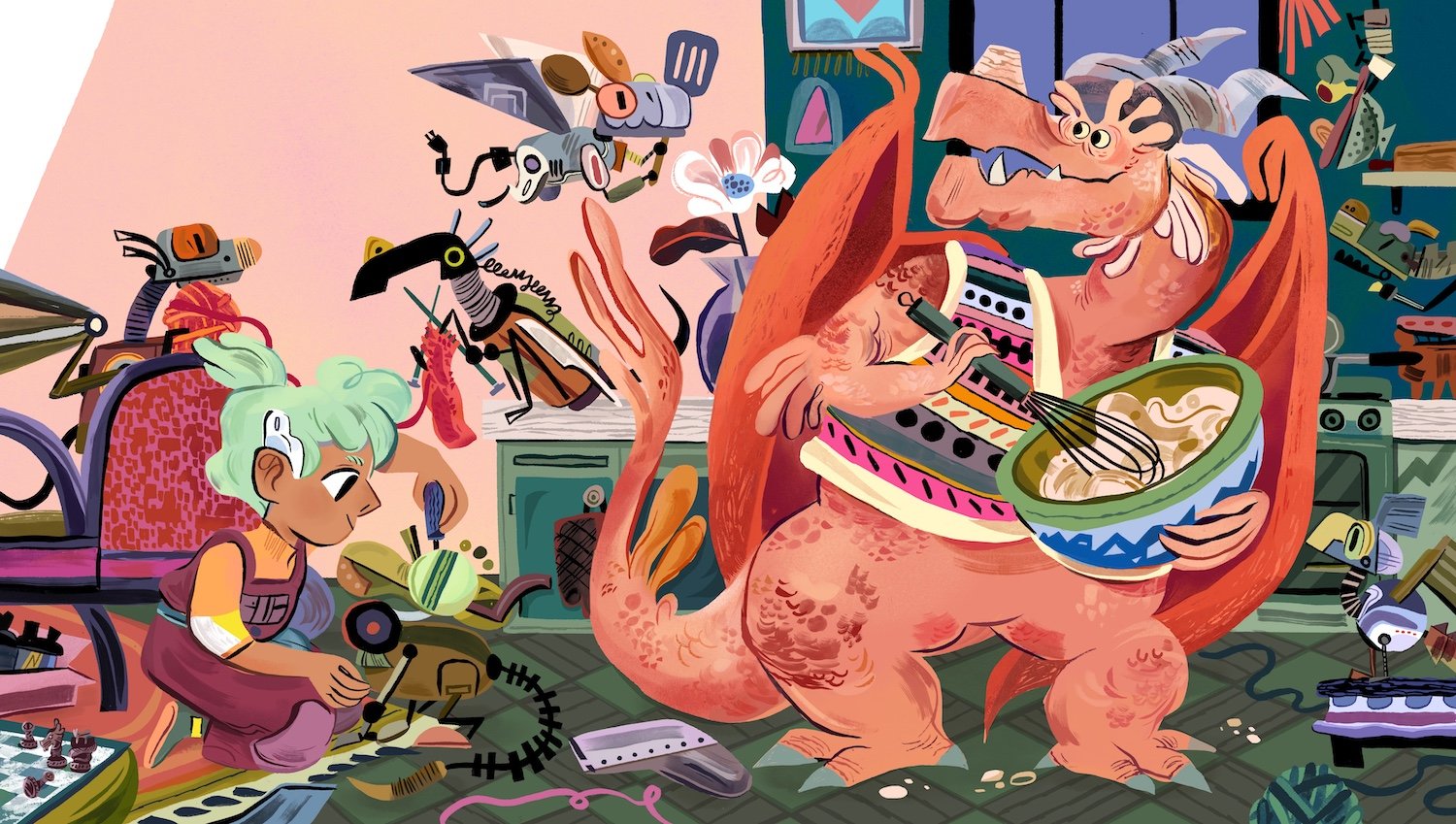Meg Hunt Dreams Up Chronicle's Trio of Futuristic Fairy Tales
I love helping artists and clients collaborate on meaningful projects. In the case of storyteller and artist Meg Hunt, I have seen amazing talent flourish. Over the last few years, Meg brought to life not just one but three of futuristic fairy tales written by bestselling author Deborah Underwood and published by Chronicle Books.
Not only was I glad to be able to help Meg navigate working on such a large project, but it was of special note to me that we were working to produce books that would be beautifully rendered, colorfully told, and have a socially positive impact on the next generation of readers.
“The process with Chronicle was very collaborative,” Meg recalls. “But I was also given a lot of freedom to develop the work in my own way, which I really appreciated. I really enjoyed the chance to put my visual mark on the page for these books.”
A lifelong artist and voracious reader (who sometimes got in trouble for drawing in her library books as a kid), Meg found early joy in telling stories and making art that could make people happy. "Then as I matured, I realized I could reflect my unique view of the world instead of what I'd seen before. I had the power to create new spaces for readers to see themselves.'
In reading through the trio of books – Interstellar Cinderella, Reading Beauty, and the recently-released Jo Bright and the Seven Bots – it’s immediately clear that “each character has a rich internal and external world,” as Meg puts it. "These are larger-than-life stories, and I designed the worlds in which they take place to reflect that anything is possible when the reader turns the page.”
In the beginning, Meg had no idea that she would be involved in all three books. But after seeing how young readers strongly connected with Interstellar Cinderella, the creative team at Chronicle decided to bring her back for the rest of the series.
“There’s a lot that’s possible in children’s books,” says Melissa Manlove, Meg’s editor at Chronicle. “It’s a very flexible format, especially when it comes to picture books like the ones we worked on with Meg.
Illustration offers the chance to do all kinds of things and affect readers emotionally in ways that photography sometimes cannot.”
Like Meg, Melissa read a great deal of books – particularly children’s books – when she was growing up and knows that, as she expertly understands: “books make a big difference in the lives of kids. It’s exciting to be able to offer that to other kids.”
“‘Working with Meg, was particularly easy because she didn’t need a lot of pointers and she’s already doing so much thinking when it comes to how to bring that emotionality I’ve been talking about to the fore. She also possesses an amazing sense of color. There are very few artists who put together such an array of colors in such surprising ways. It’s just delightful to get art from her.” ”
Indeed, Melissa went on to reveal to me that a principal reason she wanted to work with Meg on the first book of the series, Interstellar Cinderella, was due to the fact that Melissa believed Meg would be able to produce futuristic, space-age designs … that wouldn’t falter from being too stereotypically “cold” or industrial. There would be Meg’s trademark color, warmth, and humor injected into the work, which is exactly what the publisher wanted for the artwork.
“Working with artists is one of the joys of my job,” Melissa concludes. “And Meg is collaborative, easy to work with, and communicative about deadlines. She adds delightful details to stories – the richness of her imagination comes across on the page, as well as a playfulness with shape and character design. Her art speaks for itself. Meg is a delight as a colleague as well as an artist!”









